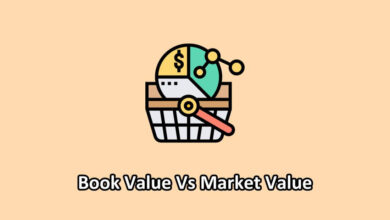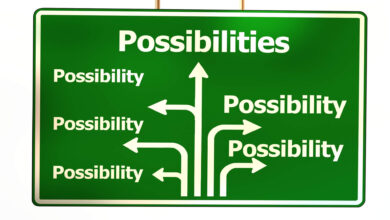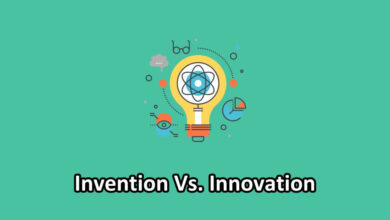Customer Vs Prospect : A Side-by-Side Comparison
In the business world, a customer is the lifeblood of any successful enterprise. These are individuals or entities that have already made a purchase or engaged in a transaction with the company.
On the other hand, a prospect represents a potential customer. These are individuals or businesses that have shown interest in the products or services but have not yet made a purchase.
In this blog, we’ll delve into the nuances that differentiate customers from prospects. These distinctions are not just about past transactions but also encompass the behavioral and psychological aspects that can inform strategic business decisions.
Customer Vs Prospect (A Comparison)
| Customer | Prospect |
|---|---|
| A customer is an individual or entity that has already made a purchase from a business, indicating a transactional history. | A prospect is a potential customer who has shown interest in a product or service but has not yet made a purchase. |
| Customers have an established transactional history, indicating a developed relationship with a business. | Prospects are in the early stages, with no prior transactional history. |
| Customers have already made a purchase, showcasing a willingness to invest. | Prospects are yet to make a commitment, showcasing potential interest. |
| A customer provides feedback based on experiences, contributing to product and service improvement. | They engage with marketing materials and initial touchpoints, offering insights into preferences. |
| Customers may receive personalized communication and offers based on past interactions. | Prospects benefit from informative and persuasive content to nurture their interest. |
| A Customer focuses on retention strategies to foster loyalty and encourage repeat business. | Prospects are the target of acquisition strategies to guide them towards making their first purchase. |
Defining a Customer
A customer is an individual or entity that has completed a transaction with a business, making a purchase, or engaging in a service. Beyond a one-time transaction, a customer implies an ongoing relationship with the company.
Characteristics of a Customer
- Transaction History: Customers have a documented transactional history, indicating a prior commitment to the business.
- Loyalty: Customers display loyalty by repeatedly choosing the company’s products or services over alternatives.
- Feedback Providers: Customers often provide feedback based on their experiences, contributing to the improvement of products and services.
- Beneficiaries of Post-Purchase Services: Customers typically benefit from post-purchase services and support, enhancing their overall experience.
Defining a Prospect
A prospect is a potential customer who has shown interest in a company’s offerings but hasn’t yet made a purchase. They might have engaged with marketing materials, visited the website, or shown other signs of interest.
Characteristics of a Prospect
- No Transactional History: Prospects lack a documented transactional history with the business, as they have yet to make a purchase.
- Exploratory Behavior: Prospects are in the early stages of the buyer’s journey, actively seeking information and evaluating options.
- Potential Interest: Prospects showcase potential interest in the company’s products or services, but this interest is not yet converted into a transaction.
- Engagement with Marketing Materials: Prospects engage with marketing materials and initial touchpoints, indicating a willingness to explore the offerings.
key Differences Between Customer and Prospect
- Feedback and Engagement: Customers provide feedback based on their experiences, contributing to the improvement of products and services. In contrast, prospects engage with marketing materials and initial touchpoints, offering valuable insights into preferences.
- Communication Approach: Customers may receive personalized communication and offers based on their past interactions. On the other hand, prospects benefit from informative and persuasive content to nurture their interest.
- Retention vs. Acquisition: Customers focus on retention strategies to foster loyalty and encourage repeat business. On the contrary, prospects are the target of acquisition strategies to guide them towards making their first purchase.
Strategies for Effective Customer and Prospect Management
A. Customer Retention Techniques
Customer retention is a critical aspect of sustained business success. Implementing personalized loyalty programs, exclusive offers, and exceptional customer service can solidify the bond between the company and its customers.
B. Lead Nurturing Strategies
For prospects, effective lead nurturing involves providing valuable and relevant content, and guiding them through the buyer’s journey. Automated email campaigns, targeted content, and personalized interactions contribute to building a relationship that leads to conversion.
C. Tailoring Communication to Each Segment
Recognizing the different needs of customers and prospects is essential. Tailoring communication involves personalized messaging for customers based on their purchase history and informative, engaging content for prospects to nurture their interest.
D. Utilizing Technology for Customer and Prospect Engagement
In the digital age, leveraging technology is imperative. Utilizing customer relationship management (CRM) systems for customer data analysis, and marketing automation tools for targeted prospect engagement, enhances efficiency and effectiveness.
Conclusion
In conclusion, understanding the distinctions between customers and prospects is pivotal for businesses aiming to thrive in a competitive market. By implementing tailored strategies for each segment, companies can foster lasting relationships with customers while effectively guiding prospects toward conversion.
As businesses evolve, so too should their approaches to customer and prospect management, ensuring sustained growth and success.


